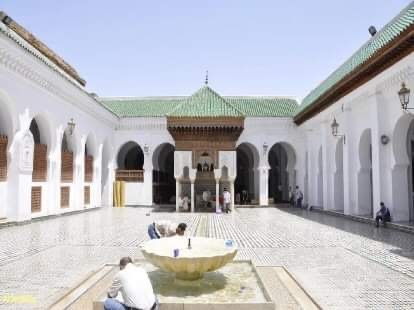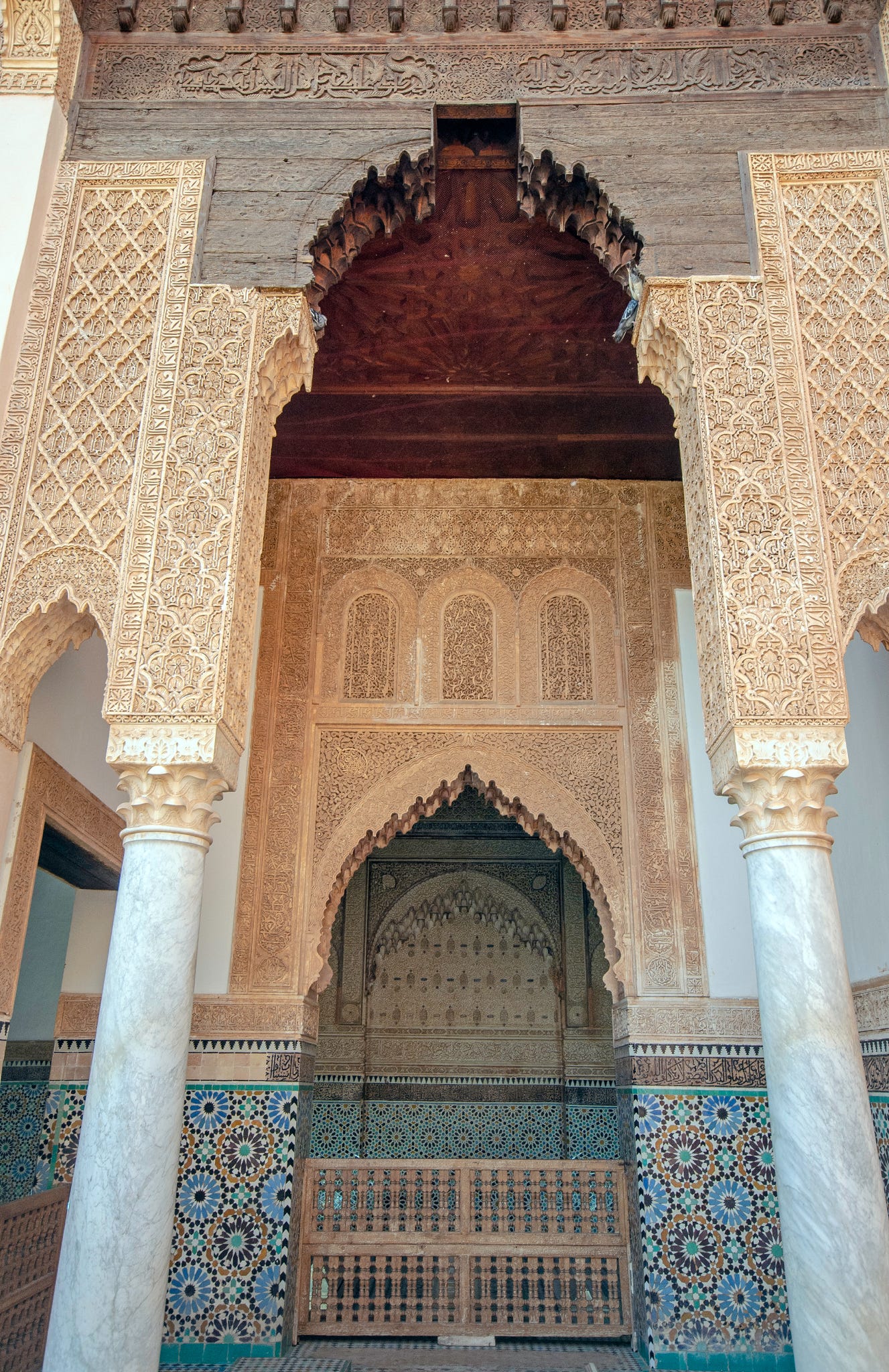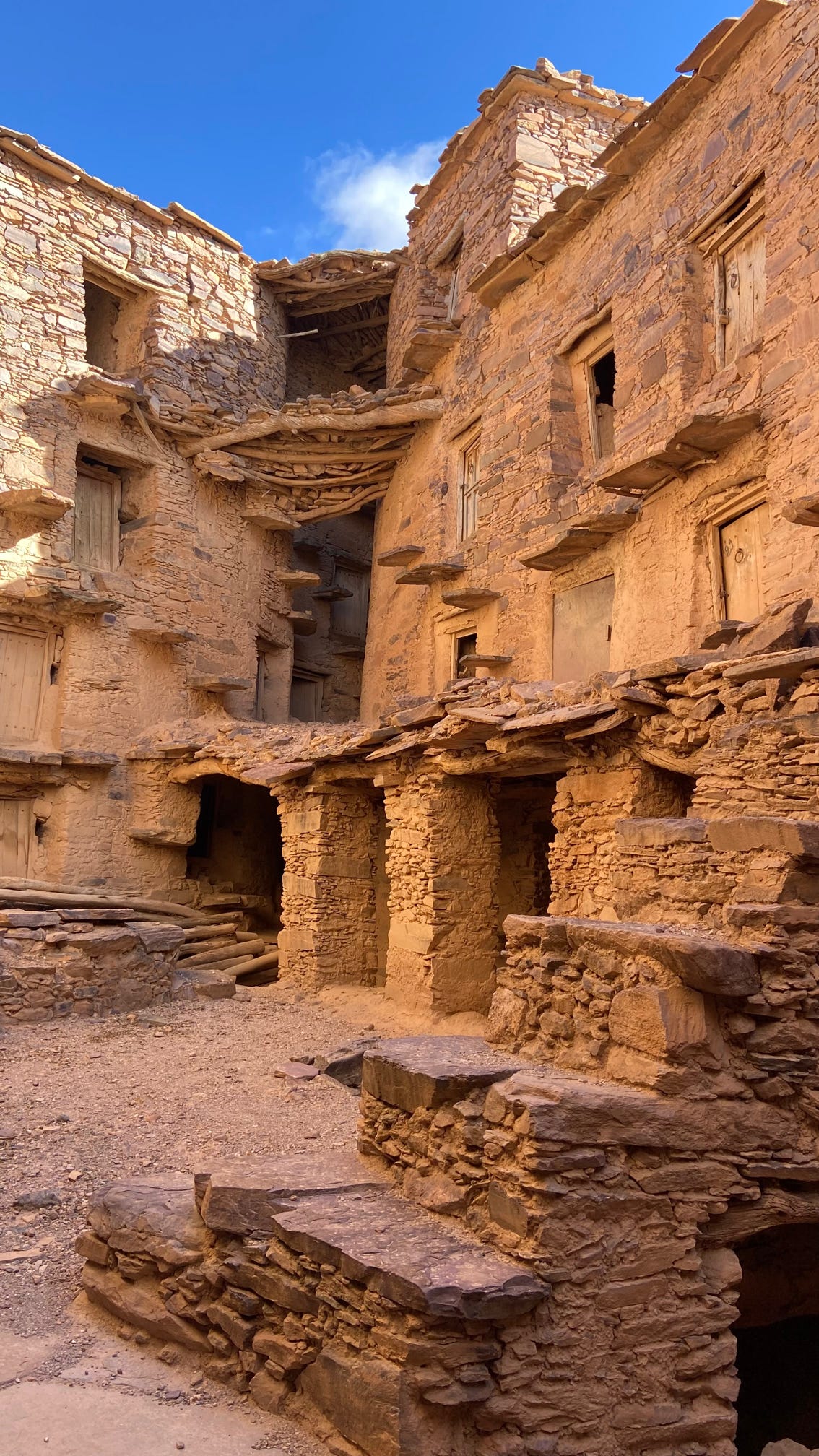
Qarawiyin University 859: A Monumental Legacy of Knowledge
Qarawiyin University was founded in 859 AD by Fatima al-Fihri, a wealthy woman from Tunisia.
Initially established as a mosque, it gradually transformed into a prominent center of learning and scholarship. The university attracted scholars from diverse disciplines, contributing to its reputation as a hub of knowledge. Historically, Qarawiyin was among the first educational institutions to admit both male and female students, regardless of their social status or background. This commitment to inclusivity was revolutionary for its time and solidified its status as a progressive institution.
Architectural and Cultural Significance
Located in the heart of Fes, one of Morocco’s most historically and culturally rich cities, Qarawiyin University boasts an impressive campus. It features a grand mosque, classrooms, courtyards, and one of the oldest and most prestigious libraries in Morocco. The architecture of the university reflects traditional Moroccan design, with intricate tilework, carved wood, and beautiful archways. The campus exudes a historical ambiance that has remained largely unchanged for centuries, offering a glimpse into Morocco’s rich intellectual and artistic heritage.
The Renowned Library
One of Qarawiyin University’s most treasured assets is its library, which houses a vast collection of ancient manuscripts, some dating back to the 9th century. These manuscripts contain invaluable knowledge, including works by great Moroccan scholars such as Averroes, Ibn Khaldoun, Ibn Al Khatib, and Ibn Tofail, as well as the mystic poet Ibn Al Arabi. Some of these manuscripts date as far back as the 12th century, making the library a priceless resource for researchers and historians interested in Islamic culture and heritage.
During the era of the Merinids, a qayyim (librarian) was appointed to oversee the collection. Later, in the 16th century, the Saadian dynasty added numerous precious manuscripts to the library. Ahmed Al Mansour, a prominent Saadian ruler, further enriched the collection by supplying hundreds of valuable books during his lifetime. Recognizing its significance, protective measures were implemented, including the installation of a heavy copper door with four locks—each librarian possessing only one key—to ensure the safety of its invaluable contents. In recent years, the library has undergone extensive restoration to preserve its legacy for future generations.
Contributions to Global Knowledge
Qarawiyin University has played a pivotal role in advancing various fields of knowledge, including Islamic studies, law, theology, grammar, rhetoric, mathematics, medicine, and astronomy. It has long served as a leading institution for Islamic scholars and intellectuals. The university is recognized by UNESCO as the world’s oldest continuously operating degree-granting institution, further cementing its place in history.
One of the university’s most remarkable contributions is its role in knowledge exchange between the Muslim world and Europe. As early as the Middle Ages, the library facilitated intellectual interactions between Muslim and European scholars, contributing significantly to the advancement of science, philosophy, and medicine in both civilizations. Many European scholars traveled to Fes to study under Qarawiyin’s esteemed professors, and its manuscripts influenced Western thought through translations that later reached universities across Europe.
The Dual Role: A Mosque and a University
One of the most unique aspects of Qarawiyin University is that, despite its academic importance, it continues to function as a fully operational mosque. The main prayer hall, located within the campus, accommodates both students and worshippers attending daily prayers. This dual role reflects the university’s commitment to integrating faith and education, reinforcing the historical Islamic tradition of knowledge-seeking as a form of worship.
Modernization and Preservation
Over the centuries, Qarawiyin University has undergone various renovations and expansions to meet the needs of its growing student body. Despite facing challenges, the institution remains committed to preserving its historical and traditional values while adapting to modern educational standards. Today, it offers courses in a range of disciplines and continues to evolve as an academic institution.
The Moroccan government and various international organizations have taken steps to preserve the Qarawiyin university’s heritage. Recent restoration projects have focused on maintaining the authenticity of its architecture while ensuring that modern facilities are available to support contemporary academic endeavors.
A Living Symbol of Intellectual and Cultural Heritage
Qarawiyin University stands as a testament to Morocco’s rich intellectual and cultural legacy. It continues to attract scholars, researchers, and visitors from around the world who wish to explore its vast history and immerse themselves in its academic environment. As one of the world’s most historically significant universities, it remains a beacon of knowledge, bridging the past and the present, and inspiring future generations to pursue learning and discovery.






